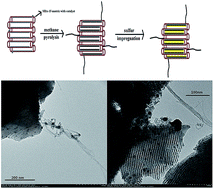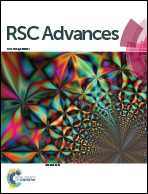Silicon dioxide molecular sieve with mono-layer carbon deposited in the channels and carbon nanotubes on the outside for lithium–sulfur batteries†
Abstract
Sulfur has been investigated as a candidate cathode material for the next generation lithium battery due to its high specific capacity (1675 mA h g−1). Moreover, sulfur is abundant, cheap and environmental friendly. However, the insulation behaviour of sulfur and lithium sulfide as well as the solubility of polysulfides hinders the commercial application of lithium sulfur batteries. In this article, a novel sulfur host matrix prepared by the deposition of mono-layer carbon into and carbon nanotubes outside silicon dioxide molecular sieve channels and particle surfaces is proposed. The mono-layer carbon and carbon nanotubes can simultaneously improve the conductivity of the composite and decrease the polarization phenomenon. The composite not only keeps the mesoporous structure belonging to the silicon dioxide molecular sieve intact, but also possesses high electron conductivity due to the deposition of carbon. After sulfur impregnation, the composite exhibits a high initial discharge capacity of 500 mA h g−1 and good cycle stability of 250 mA h g−1 after 100 cycles at a rate of 0.1C, corresponding to a low capacity decay rate of about 0.81% per cycle.


 Please wait while we load your content...
Please wait while we load your content...